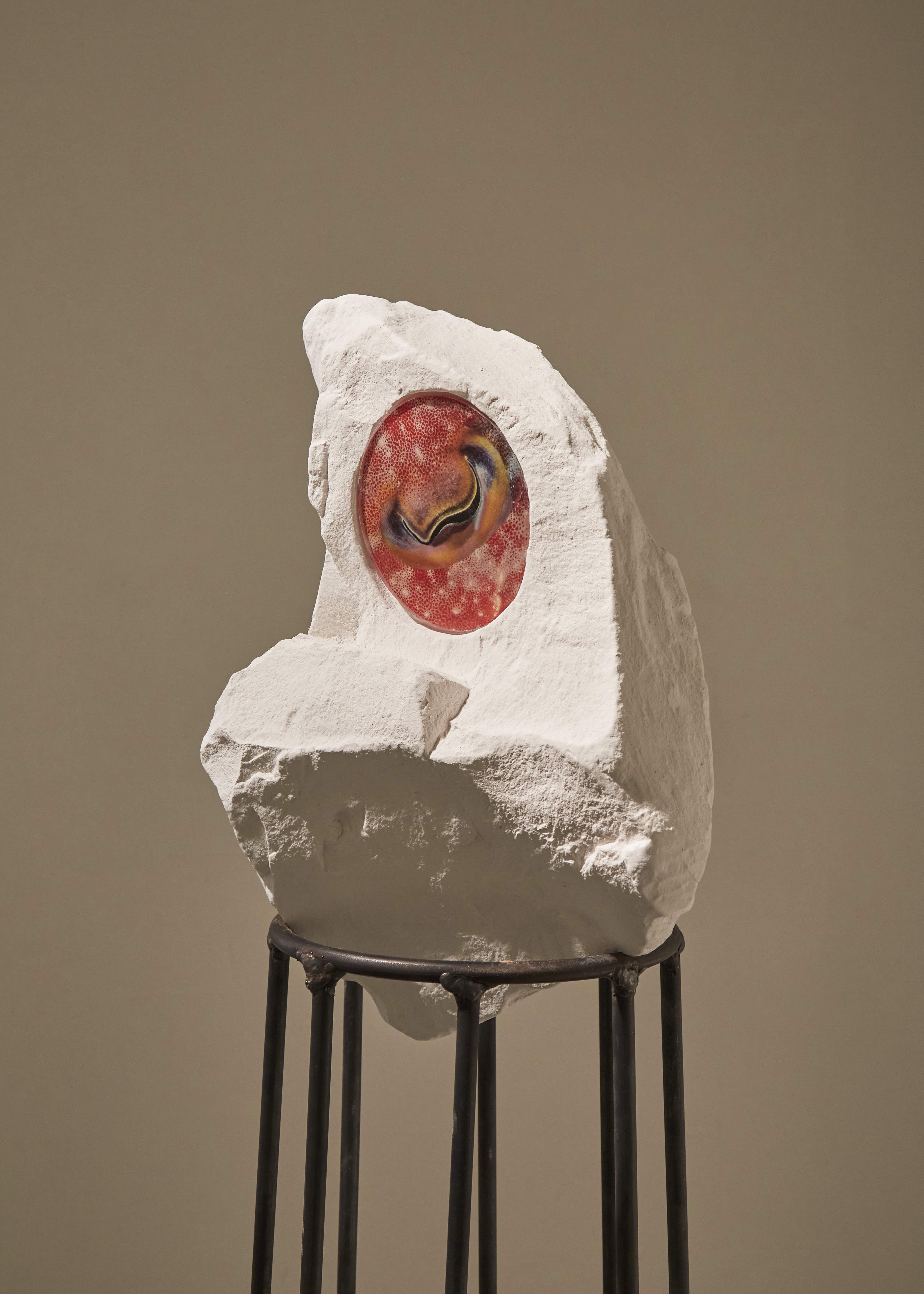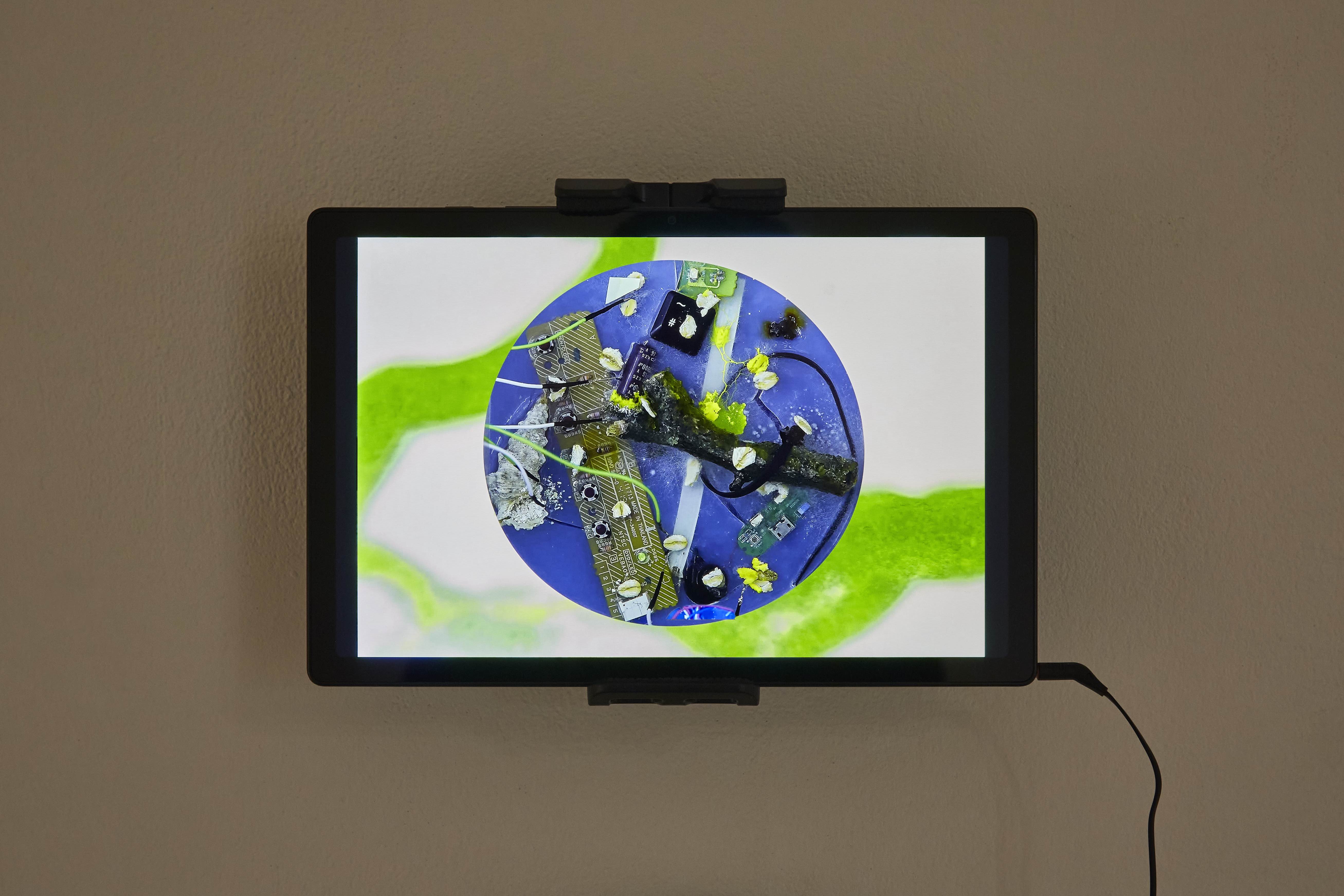WRACK LINE
8 March - 11 April 2024
Arts SU Gallery Space, 272 High Holborn, London, WC1V 7EY
Wrack line - a strip of debris left on a beach by the high tide. Ephemeral and internally diverse, it's a unique meeting spot for marine life forms such as clams and crabs, but also the organic remains of various sea species, bones, empty shells, and driftwood. There are also the unwanted guests at the wrack line, covered in brown and yellow algae - glass, plastic, and other human-produced waste, accumulated in the seawaters. When we encounter kelp, shells, and miniature life forms gathered at the wrack line, we look at them from above, occasionally searching for pretty seashells, running our fingers through slimy algae, and shuddering with disgust when we come across a cigarette butt. What if we could understand the whispers of this collective microcosm? What if, instead of stories of beauty from the sea depths, we heard the promise of revenge?
'Wrack line' explores the ideas and limits of human and non-human relationships through the language of contemporary art practices. Featured works focus on the boundaries of organic and non-organic beings, their materiality, and agency. Sculptures by Mirka Vecerova, Urte Janus and Julia Shu explore the materiality of life forms, balancing on the edge of futuristic science-fiction imagery and geological familiarity, whilst Karol Chmielewski delves into the sonic intricacies of life at the wrack line. Wrack line residents are reminiscent of chalky fossils discovered after years of being buried in the ground; but also because of their shiny, gooey, and slimy qualities, they come alive.
Janus' works ooze with the destructive powers of natural erosive materials, such as salt and acids, used by the artist on chalk. The abrasive nature of those agents is not yet seen as catastrophic but transformative. Her practice of using microelements that constantly penetrate and change the body of the work slowly but steadily uncovers the limits of the human eye, to which the chemically complicated effect of that process may not be immediately noticeable. Vecerova's fossils' power is locked in their gaze, looking directly back at their observer. The juxtaposition of matte and dry chalk with colourful and glossy eyes breathes life into the bodies of her creatures but does not try to make them speak in ways that humans understand. Instead, Vecerova embraces the unknown, the alien, and the bizarre, working alongside nature without asserting dominance. Julia Shu’s ‘Metanature’ unfolds a dynamic symbiosis between living organisms and the discarded tech. Bioacoustics play a crucial role in the landscape of interspecies communication, fostering a deeper understanding of the evolving relationship between the living and non-living. Karol Chmielewski’s soundscape is a sonic take on the fragmented and multilayered structure of the wrack line. Through the usage of various sound textures, he tells the story of marine echoes, juxtaposed with the grainy and harsh melodies, working in unison together.
The exhibition explores futuristic imagery and soundscape, playing with the art history of marine representations, such as still lifes with shells, cabinets of curiosities featuring coral reefs and other sea life forms, detached from their original surroundings and catalogued to please the human eye. It also recalls the images of sea monsters accompanying the corners of seventeenth-century maps, when the sea as an ecosystem was imagined as dangerous, treacherous, and unknown. According to research by Burden, A., Smeaton, C., Angus, S., Garbutt, A., Jones, L., Lewis H.D.and Rees. S.M., titled ‘Impacts of climate change on coastal habitats relevant to the coastal and marine environment around the UK’ (2020), natural coastal systems are very resilient to change, and they have the ability to self-regulate. However, human alterations made to the coasts over the years, violated those ecosystems and thus affected their ability to self-regulate, posing a real threat for further destabilisation of the coastline. Whilst creatures from the ‘Wrack Line’ might plan for their revenge and total takeover of the coastline, the human quest for reframing the relationship with the ecosystem becomes more pressing than ever.
Exhibiting Artists: Julia Shu, Karol Chmielewski, Miroslava Vecerova & Urte Janus.










 Photo credits: Corey Bartle-Sanderson. Supported by SU UAL
Photo credits: Corey Bartle-Sanderson. Supported by SU UAL